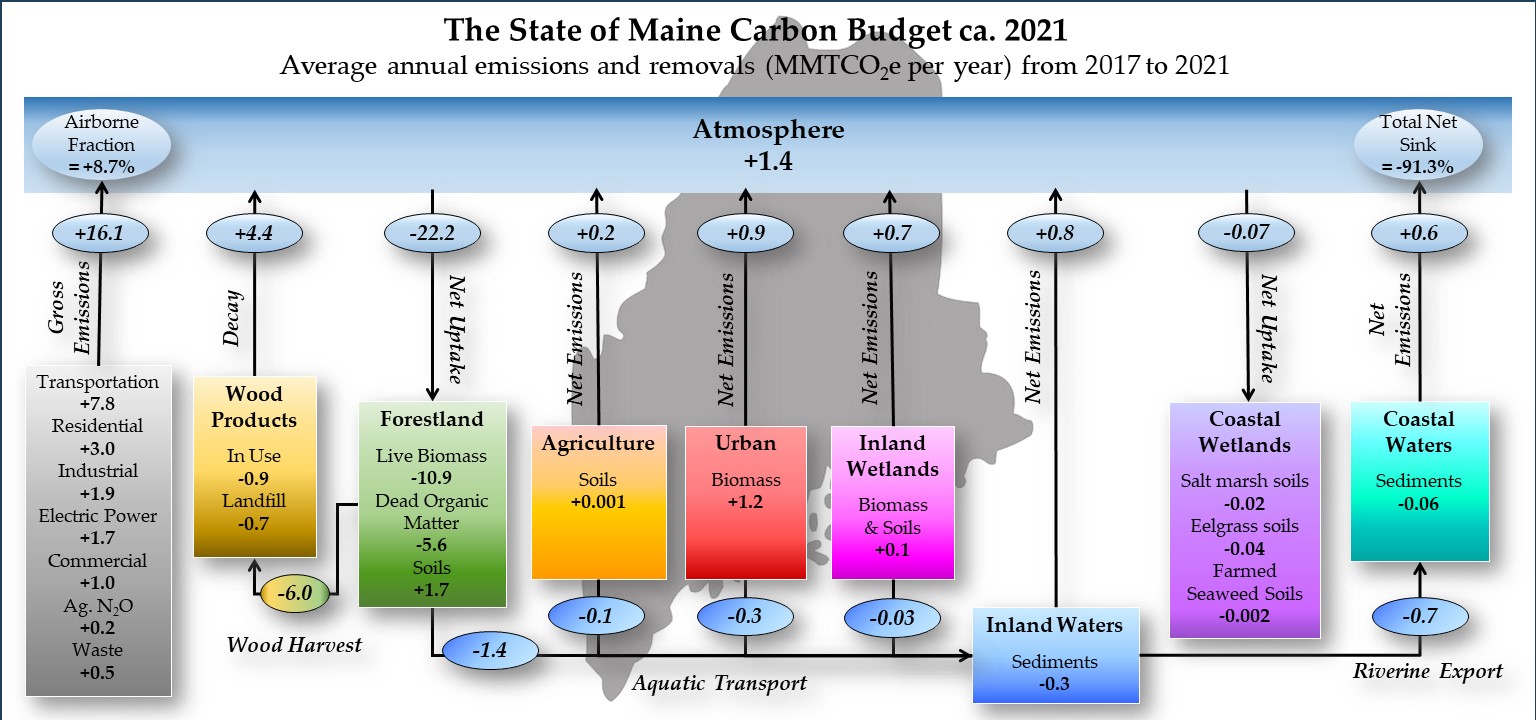State of Maine’s Carbon Budget (version 2.0)
Version 2.0 of Maine’s Carbon Budget updates the estimates ca. 2021 along with five-year intervals to report three recent time periods (2007-2011, 2012-2016, and 2017-2021) using the same data sources and consistent methodology as outlined in the DEP Rules Chapter 167. Compared to version 1.0, this new budget analysis uses the same component pools, fluxes, and transfers, but the updated estimates for these incorporate several new data sources and improved calculation approaches. Additional details and related resources can be found here: https://crsf.umaine.edu/carbon-budget/


Wood Products Carbon Accounting
This project aims to develop an advanced wood products carbon flow and storage estimator. Building on our current Wood Products Carbon Storage (WPsCS) estimator, the new version will incorporate comprehensive timber carbon flux processes, reflect advancements in timber processing, and include a substitution model to evaluate the carbon benefits of replacing traditional materials with timber. The project will also develop a detailed parameter database and user-friendly visualization tools to improve usability. The estimator will support forest managers, policymakers, and wood industry professionals in making informed decisions that balance ecological sustainability with economic objectives. Additionally, it will help stakeholders actively participate in the carbon credit market.
Lateral Carbon Flux
Inland waters receive large quantities of dissolved organic carbon (DOC) from soils and act as conduits for the lateral transport of this terrestrially derived carbon, ultimately storing, mineralizing, or delivering it to oceans. The lateral DOC flux plays a crucial role in the global carbon cycle. To quantify the lateral DOC flux and its potential fates in coastal environments, we combined field measurements, various modeling approaches, and a synthesis of existing studies. Our analysis indicates that global inland waters receive approximately 376 ± 92 TgC/year of DOC from soils, with around 150 ± 37 TgC/year eventually delivered to coastal oceans.

